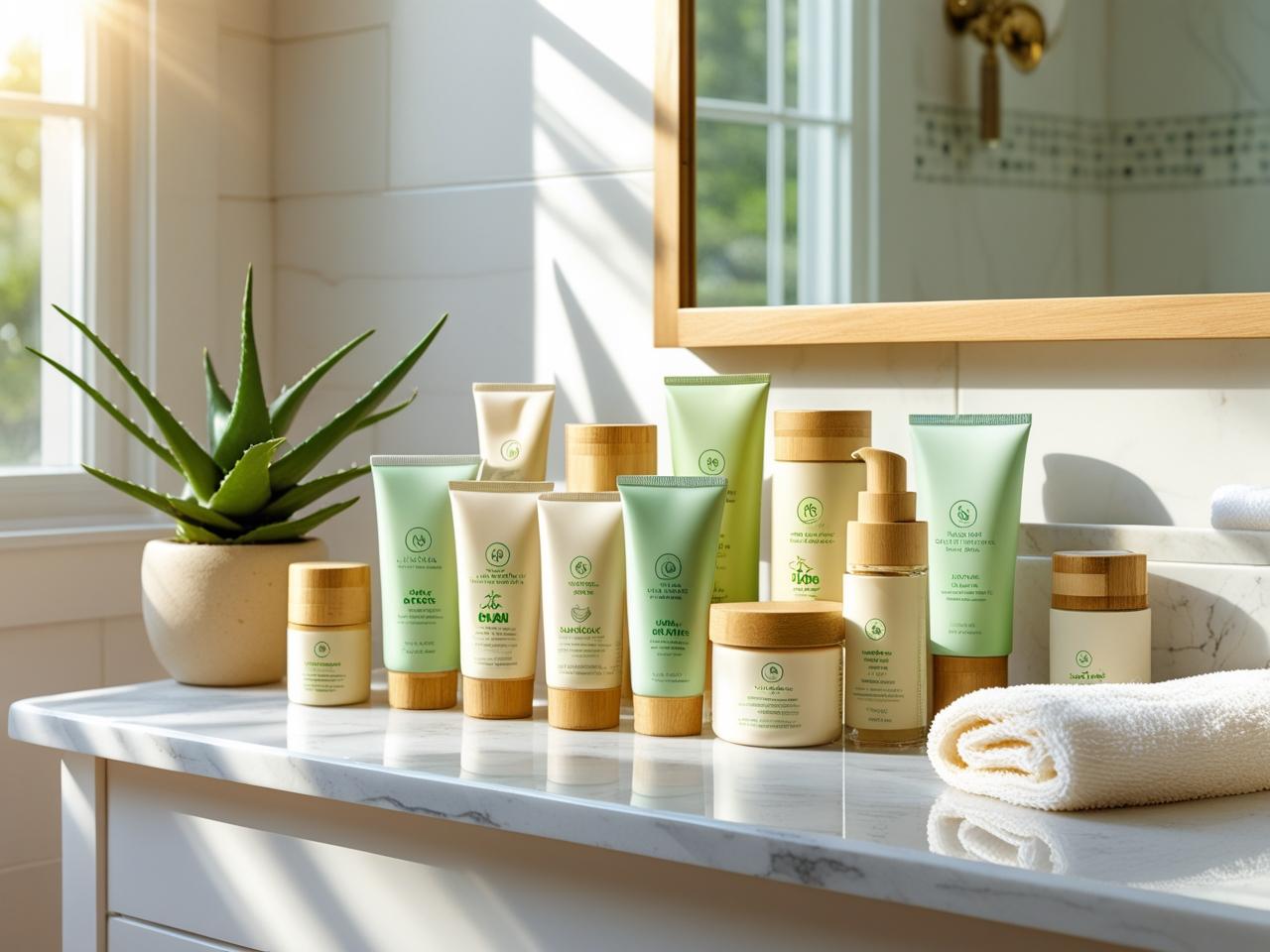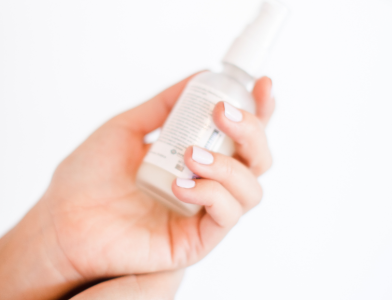The 8 Best Safe Sunscreens for Summer 2025 According to a Toxicologist
Staying healthy means making mindful choices, including how you protect your skin from the sun. With so many options labeled as “natural” or “mineral,” it’s important to ensure you’re truly avoiding harmful chemicals and reducing your toxin exposure regardless of the marketing. This guide, curated by PhD toxicologist and mom, highlights the safest sunscreens for summer 2025, empowering you to make the healthiest possible choice for yourself and your family.
Why Choosing a Safe Sunscreen Matters for Your Health
Sunscreen is essential for preventing sun damage, but many common formulas contain ingredients that may disrupt hormones, irritate sensitive skin, and accumulate in the body. Naturally, these concerns are even greater for children, whose bodies are still developing. With outdated FDA regulations and questionable ingredients still in use, the sunscreen you apply daily could be exposing you to more toxins than you realize.
Harmful Ingredients to Avoid in Sunscreen
Due to evolving research, certain substances found in mainstream sunscreens raise red flags for health-conscious shoppers. Naturally, steering clear of these can help minimize exposure to endocrine disruptors and other toxins.
- Oxybenzone, octinoxate, homosalate: Linked to hormone disruption and found in urine, blood, and breast milk.
- Fragrance/parfum: Can hide hundreds of chemicals, including known endocrine disruptors and allergens.
- Aerosol sprays: Potential for contamination with benzene, a known carcinogen.
- Nano zinc oxide: Unnecessary when non-nano options provide effective coverage.
- Synthetic UV filters and parabens: Associated with skin irritation and hormone disruption.
What to Look for in a Safe Mineral Sunscreen
Choosing a sunscreen naturally free from toxins means focusing on the right formulation. As a toxicologist, these are reliable indicators of a healthy sun protection product:
- Non-nano zinc oxide: The safest active ingredient for broad-spectrum defense.
- Cream or stick formulas: Reduce the risk of inhaling particles.
- No synthetic fragrance: Ensures no hidden chemical irritants or endocrine disruptors.
- No parabens, PEGs, or phthalates: Especially crucial for kids.
- Transparent labeling: So you know exactly what’s in the product you and your family are using.
Top Sunscreen Picks for Summer 2025 (Toxicologist-Vetted)
If you want peace of mind and genuine protection, these sunscreens have been personally tested and scrutinized for safety and clean formulations. Protect naturally without compromising your wellbeing. Be sure to research thoroughly before buying.
- Cocokind Daily SPF: Minimalist, fragrance-free, and lightweight – great for daily wear.
- Juice Beauty Stem Cellular CC Cream SPF 30: Offers coverage, sun protection, and added antioxidants.
- Saie Slip Tint SPF 30: Hydrating with multiple shades and clean ingredients.
- RMS Beauty SuperNatural Radiance Serum: High zinc content, glow-boosting, and free of harmful additives.
- Attitude Kids Mineral SPF Face Stick: Plastic-free, gentle, EWG-verified, and easy for kids to apply.
- Badger Mineral Kids Sunscreen SPF 40: Organic formula and great coverage for kids and babies.
- Dakota Tallow Sunscreen: Non-nano zinc oxide, nourishing natural ingredients, and low white cast.
- Pipette Mineral Broad Spectrum SPF 50: Fragrance-free and moisturizing – suitable for all ages.
🧴 Shop my top Low Tox Sun Protection picks here.
Affiliate Disclosure:
Links provided on this page are affiliate links, which means if you click on it and make a purchase I may earn commission. The commission comes at no cost to you and allows me to continue my research. Note- I only recommend products that I personally use and trust. I will always disclose whether a link is an affiliate link, and never recommend products solely for the purpose of commission.
Practical Tips for Safer Sun Protection
To harness the benefits of sun safety and minimize exposure to toxins naturally, try these practical strategies:
- Opt for mineral sunscreens with non-nano zinc oxide as your active ingredient.
- Avoid sprays and aerosols, especially those containing zinc oxide or titanium dioxide.
- Read the label closely and look for transparent brands with simple ingredient lists.
- Use sunscreen sticks for children and reapply frequently during outdoor play. Makes it easier for kids to apply independently.
- Pair sunscreen with wide-brimmed hats and sun-protective clothing for added security.
Empower Yourself with Informed Choices
Your health is in your hands, and choosing natural, toxin-free sun protection is one way to take control. By learning what to look for—and what to avoid—you protect yourself and your family every time you step outside.
Want more practical support?
Together, we can make safer, smarter choices for a vibrant, toxin-free summer. Which sunscreen will you try first? Let us know your favorites or questions in the comments!
References
- Rodríguez E, Valbuena MC, Rey M, Porras de Quintana L. Causal agents of photoallergic contact dermatitis diagnosed in the national institute of dermatology of Colombia. Photodermatol Photoimmunol Photomed. 2006 Aug;22(4):189-92. doi: 10.1111/j.1600-0781.2006.00212.x. PMID: 16869867.
- Relier C, Dubreuil M, Lozano Garcìa O, Cordelli E, Mejia J, Eleuteri P, Robidel F, Loret T, Pacchierotti F, Lucas S, Lacroix G, Trouiller B. Study of TiO2 P25 Nanoparticles Genotoxicity on Lung, Blood, and Liver Cells in Lung Overload and Non-Overload Conditions After Repeated Respiratory Exposure in Rats. Toxicol Sci. 2017 Apr 1;156(2):527-537. doi: 10.1093/toxsci/kfx006. PMID: 28087835.
- Mei N, Hu J, Xia Q, Fu PP, Moore MM, Chen T. Cytotoxicity and mutagenicity of retinol with ultraviolet A irradiation in mouse lymphoma cells. Toxicol In Vitro. 2010 Mar;24(2):439-44. doi: 10.1016/j.tiv.2009.10.004. Epub 2009 Oct 14. PMID: 19835946; PMCID: PMC6359890.
- Photocarcinogenesis Study of Retinoic Acid and Retinyl Palmitate in SKH-1 Mice (Simulated Solar Light and Topical Application Study). National Toxicology Program. August 2012. https://ntp.niehs.nih.gov/publications/reports/tr/tr568. Accessed 22 May 2025.
- Matta MK, Florian J, Zusterzeel R, Pilli NR, Patel V, Volpe DA, Yang Y, Oh L, Bashaw E, Zineh I, Sanabria C, Kemp S, Godfrey A, Adah S, Coelho S, Wang J, Furlong LA, Ganley C, Michele T, Strauss DG. Effect of Sunscreen Application on Plasma Concentration of Sunscreen Active Ingredients: A Randomized Clinical Trial. JAMA. 2020 Jan 21;323(3):256-267. doi: 10.1001/jama.2019.20747. Erratum in: JAMA. 2020 Mar 17;323(11):1098. doi: 10.1001/jama.2020.1950. PMID: 31961417; PMCID: PMC6990686.
- Substance Infocard 2-(4-tert-butylbenzyl)propionaldehyde. European Chemicals Agency. June 9, 2023. https://echa.europa.eu/substance-information/-/substanceinfo/100.001.173. Accessed 22 May 2025.
- Dittmar D, Schuttelaar MLA. Contact sensitization to hydroperoxides of limonene and linalool: Results of consecutive patch testing and clinical relevance. Contact Dermatitis. 2019 Feb;80(2):101-109. doi: 10.1111/cod.13137. Epub 2018 Oct 31. PMID: 30378131; PMCID: PMC6587870.
- Berger KP, Kogut KR, Bradman A, She J, Gavin Q, Zahedi R, Parra KL, Harley KG. Personal care product use as a predictor of urinary concentrations of certain phthalates, parabens, and phenols in the HERMOSA study. J Expo Sci Environ Epidemiol. 2019 Jan;29(1):21-32. doi: 10.1038/s41370-017-0003-z. Epub 2018 Jan 9. PMID: 29317738; PMCID: PMC6037613.
- Bouche MP, Lambert WE, Van Bocxlaer JF, Piette MH, De Leenheer AP. Quantitative determination of n-propane, iso-butane, and n-butane by headspace GC-MS in intoxications by inhalation of lighter fluid. J Anal Toxicol. 2002 Jan-Feb;26(1):35-42. doi: 10.1093/jat/26.1.35. PMID: 11890178.
- Sugie H, Sasaki C, Hashimoto C, Takeshita H, Nagai T, Nakamura S, Furukawa M, Nishikawa T, Kurihara K. Three cases of sudden death due to butane or propane gas inhalation: analysis of tissues for gas components. Forensic Sci Int. 2004 Jul 16;143(2-3):211-4. doi: 10.1016/j.forsciint.2004.02.038. PMID: 15240046.
- Committee on Acute Exposure Guideline Levels; Committee on Toxicology; Board on Environmental Studies and Toxicology; Division on Earth and Life Studies; National Research Council. Acute Exposure Guideline Levels for Selected Airborne Chemicals: Volume 12. Washington (DC): National Academies Press (US); 2012 Apr 27. 1, Butane: Acute Exposure Guideline Levels. Available from: https://www.ncbi.nlm.nih.gov/books/NBK201460/
- InformedHealth.org [Internet]. Cologne, Germany: Institute for Quality and Efficiency in Health Care (IQWiG); 2006-. In brief: How much sun is too much? [Updated 2022 Jul 4]. Available from: https://www.ncbi.nlm.nih.gov/books/NBK321117/
- Petyaev IM, Pristensky DV, Morgunova EY, Zigangirova NA, Tsibezov VV, Chalyk NE, Klochkov VA, Blinova VV, Bogdanova TM, Iljin AA, Sulkovskaya LS, Chernyshova MP, Lozbiakova MV, Kyle NH, Bashmakov YK. Lycopene presence in facial skin corneocytes and sebum and its association with circulating lycopene isomer profile: Effects of age and dietary supplementation. Food Sci Nutr. 2019 Mar 13;7(4):1157-1165. doi: 10.1002/fsn3.799. PMID: 31024688; PMCID: PMC6475749.
- Roberts RL, Green J, Lewis B. Lutein and zeaxanthin in eye and skin health. Clin Dermatol. 2009 Mar-Apr;27(2):195-201. doi: 10.1016/j.clindermatol.2008.01.011. PMID: 19168000.
- Walsh RP, Bartlett H, Eperjesi F. Variation in Carotenoid Content of Kale and Other Vegetables: A Review of Pre- and Post-harvest Effects. J Agric Food Chem. 2015 Nov 11;63(44):9677-82. doi: 10.1021/acs.jafc.5b03691. Epub 2015 Oct 28. PMID: 26477753.



